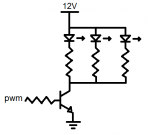- Joined
- Sep 20, 2008
- Messages
- 17,646
- Points
- 113
Better to freak out now rather than paying finesyea, ive let him know that i require a lasermeter if i am to finish this project.
so, my understanding of this, is that if the lasers are all under 4mW, then i am safe. i have so much going on right now, and now, with the legalities of this, im kinda freaking out...
or doing time later...
Jerry




